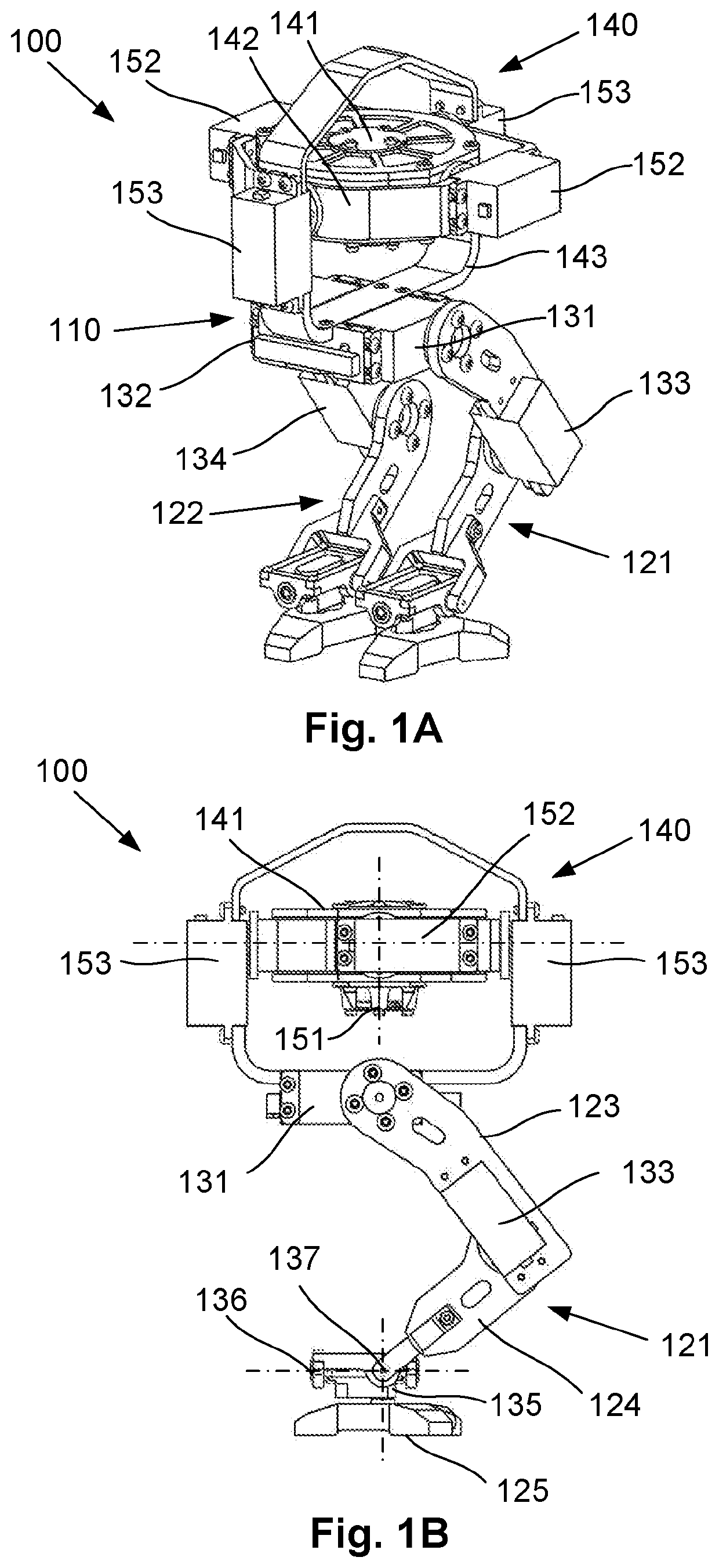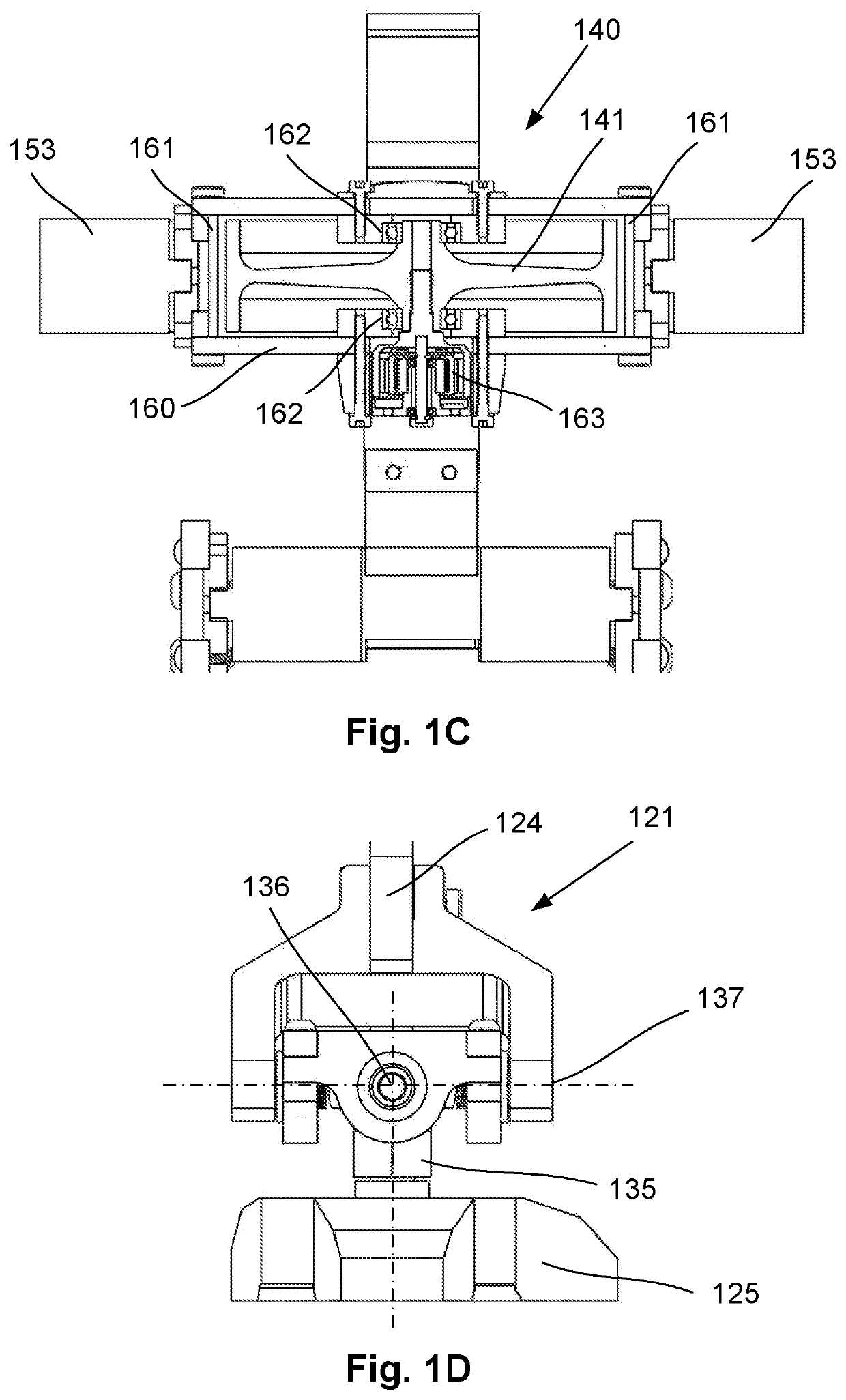Gyroscopically stabilised legged robot
a gyroscope and gyroscope technology, applied in the direction of manufacturing tools, process and machine control, instruments, etc., can solve the problems of significant increase in design, control and actuation cost and complexity, and the inability to move appendages around humans, etc., and achieve the effect of rotating the gyroscope axes
- Summary
- Abstract
- Description
- Claims
- Application Information
AI Technical Summary
Benefits of technology
Problems solved by technology
Method used
Image
Examples
Embodiment Construction
[0065]An example of a gyroscopically stabilised legged robot 100 will now be described with reference to FIGS. 1A to 1D.
[0066]In broad terms, the robot 100 includes a body 110, and a number of legs 121, 122 coupled to the body 110 and configured for providing legged locomotion of the robot across a surface in use. It will be appreciated that the particular form of legged locomotion will depend on the number and construction of the legs. Whilst the following description will primarily focus on a two-legged (i.e. bipedal) embodiment of the robot 100 as shown in FIGS. 1A to 1D, which is capable of a walking locomotion, it should be understood that the techniques set out below can be applied to robots having any number of legs, ranging from one legged hopping robots to walking robots having more than two legs.
[0067]The robot 100 is adapted to at least partially stabilise the angular orientation of the body 110 during its legged locomotion. FIG. 2 is a block diagram of an example of an o...
PUM
 Login to View More
Login to View More Abstract
Description
Claims
Application Information
 Login to View More
Login to View More - R&D
- Intellectual Property
- Life Sciences
- Materials
- Tech Scout
- Unparalleled Data Quality
- Higher Quality Content
- 60% Fewer Hallucinations
Browse by: Latest US Patents, China's latest patents, Technical Efficacy Thesaurus, Application Domain, Technology Topic, Popular Technical Reports.
© 2025 PatSnap. All rights reserved.Legal|Privacy policy|Modern Slavery Act Transparency Statement|Sitemap|About US| Contact US: help@patsnap.com



